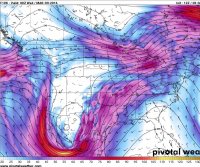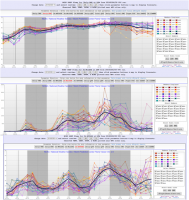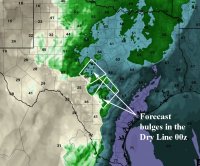Randy Jennings
Supporter
- Joined
- May 18, 2013
- Messages
- 855
It's way too early to get my hopes up and start picking a target area, but I think we need to keep a watch on Tuesday 3/8 in Texas. Looking at the GFS, it looks like a upper low will be centered over southern New Mexico with a surface low somewhere in northwest Texas with a dryline spanning the state. Sheer looks good with decent Td for this early in the season. CAPE between 1000-3000 depending on time of day and how far south you go. Cap looks breakable. Lift may be the problem on this one. Can we get some surface focus in the right place at the right time? Too early to tell, but I'll be paying more attention as more models come in range.
Edit: After some chat and looking at this some more, I've added OK to the thread.
Edit: After some chat and looking at this some more, I've added OK to the thread.
Last edited:



